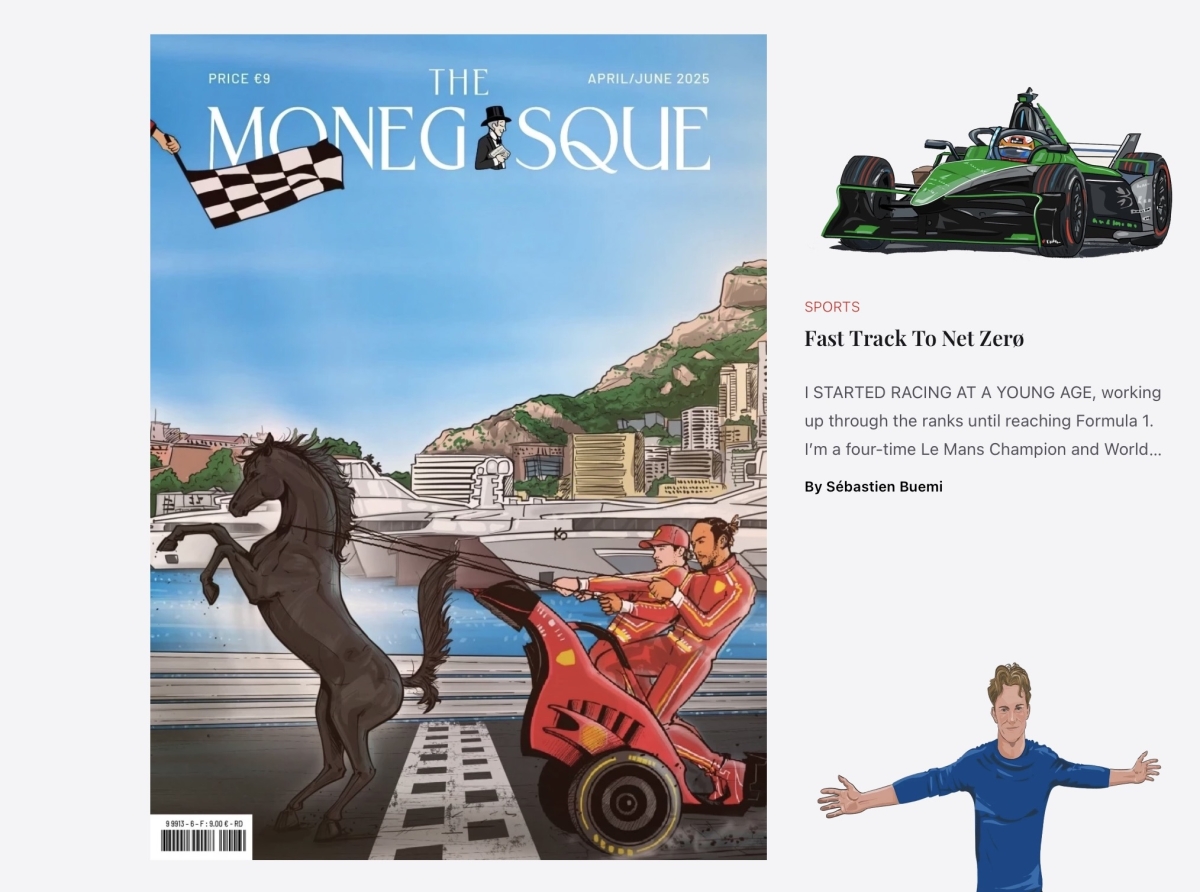DMCC Presents Record-Breaking Silver Bar Ahead of Planned Tokenisation
DMCC has introduced what Guinness World Records has certified as the wor...
Nov 28, 2025

In Monaco where elegance meets velocity, The Monegasque™ magazine has quietly established itself as one of the most exclusive titles in international publishing. Its formula is simple yet radical: every word is penned by public figures themselves, unfiltered voices of celebrities, athletes, and cultural icons. Its most recent edition, the “Grand Prix Issue,” is attracting attention not only for its editorial ambition but for a curious coincidence: every racing driver featured in the issue has since landed a major podium.
Oscar Piastri, Sébastien Buemi, and Maro Engel—three contributors to the issue—each enjoyed notable success within days of the magazine’s release. In a sport where even the smallest psychological edge can make the difference between a win and a loss, some are beginning to ask: is there a Monegasque effect?
The timing is hard to ignore.
On May 4, 2025, Oscar Piastri captured a commanding win at the Miami Grand Prix, his fourth victory of the Formula 1 season. Driving for McLaren, the 23-year-old Australian held off teammate Lando Norris in a dominant 1-2 finish, widening his lead in the Drivers’ Championship standings. In The Monegasque™, Piastri reflected on the psychological demands of racing at the sport’s highest level, describing the mental discipline that underpins his performance.
That same day, Sébastien Buemi—a long-time Monaco resident and veteran of Formula E—took first place at the Monaco E-Prix. Starting eighth on a rain-slicked grid, Buemi executed a tactically astute race to secure his first victory in six years. Writing for the magazine, Buemi explored the evolution of electric racing, pairing his analysis with a quiet confidence that now seems prophetic.
Just 24 hours earlier, GT racing specialist Maro Engel, also based in Monaco, earned a podium finish at the GT World Challenge Europe Sprint Cup in Brands Hatch, driving for Mercedes-AMG. The result followed his win at the 2025 Bathurst 12 Hour earlier in the year. Engel’s contribution to the magazine was a vivid account of endurance racing and the razor-thin margins between success and disappointment.
None of the drivers claim that their written reflections had any direct bearing on their performance. Yet the idea that the act of writing—of introspection, of clarity—could serve as a catalyst for competitive focus is not without precedent. In a paddock where many drivers turn to superstition, mindfulness, or repetition for an edge, a literary ritual may be no stranger.
Each essay is marked by the same traits that define their authors on the track. Piastri’s writing is methodical and analytical, mirroring the precision of his lap-14 overtake on Max Verstappen in Miami. Buemi’s measured tone echoes his strategic composure through Monaco’s wet corners. Engel’s prose is cinematic, as layered as his wheel-to-wheel battles in Europe’s toughest GT circuits.
What The Monegasque™ has created is more than a motorsports edition—it is a hybrid of culture and competition, where world-class drivers become storytellers. With its polished aesthetic and access to voices rarely heard in their own words, the magazine offers something increasingly rare in celebrity media: authenticity.
Whether or not its pages carry a touch of good fortune is, for now, a matter of speculation. What is certain is that its contributors are not only shaping podiums but reshaping how athletes can express themselves beyond them. As The Monegasque™ continues to redefine the role of celebrity editorial, motorsport fans—and perhaps a few drivers—will be watching closely to see if its streak holds.